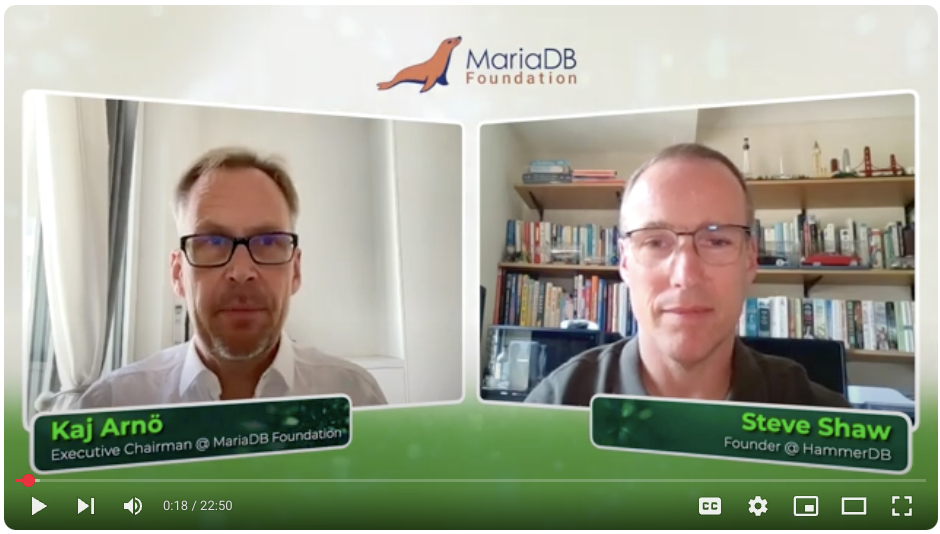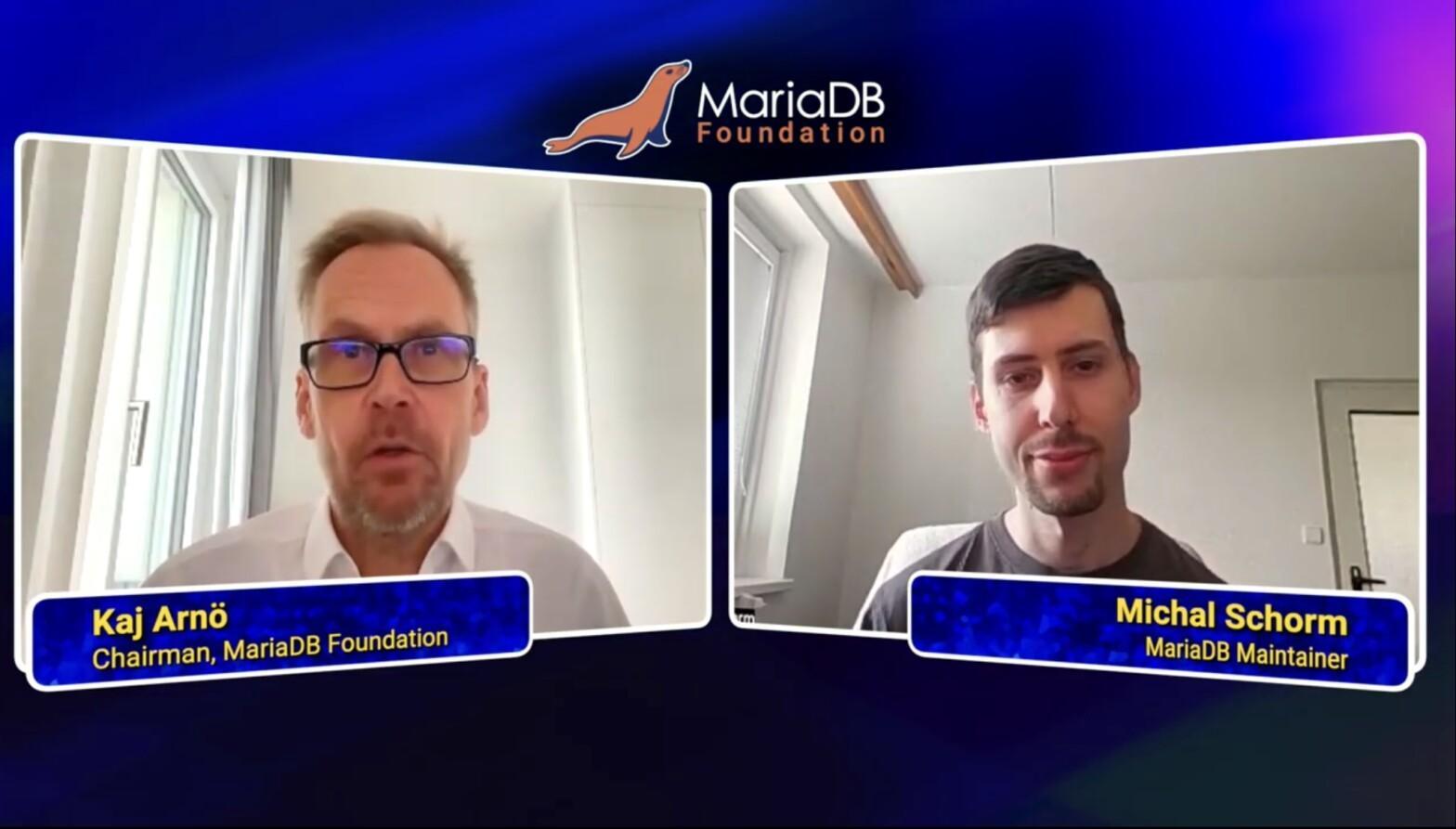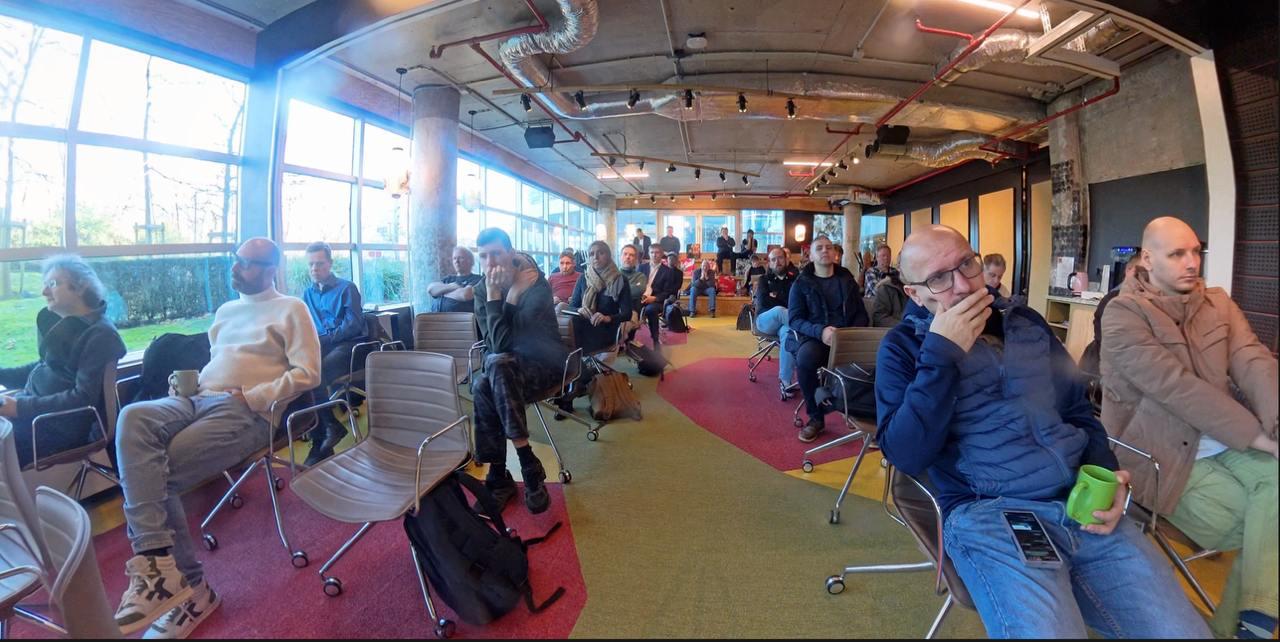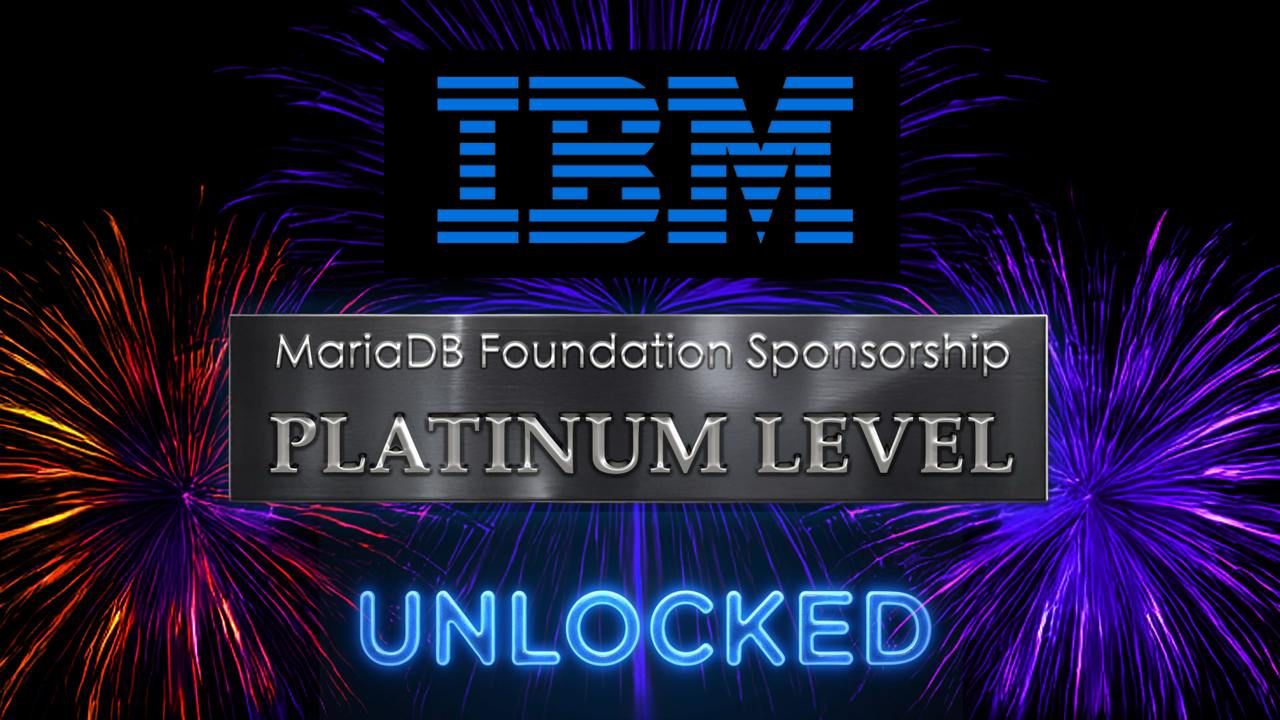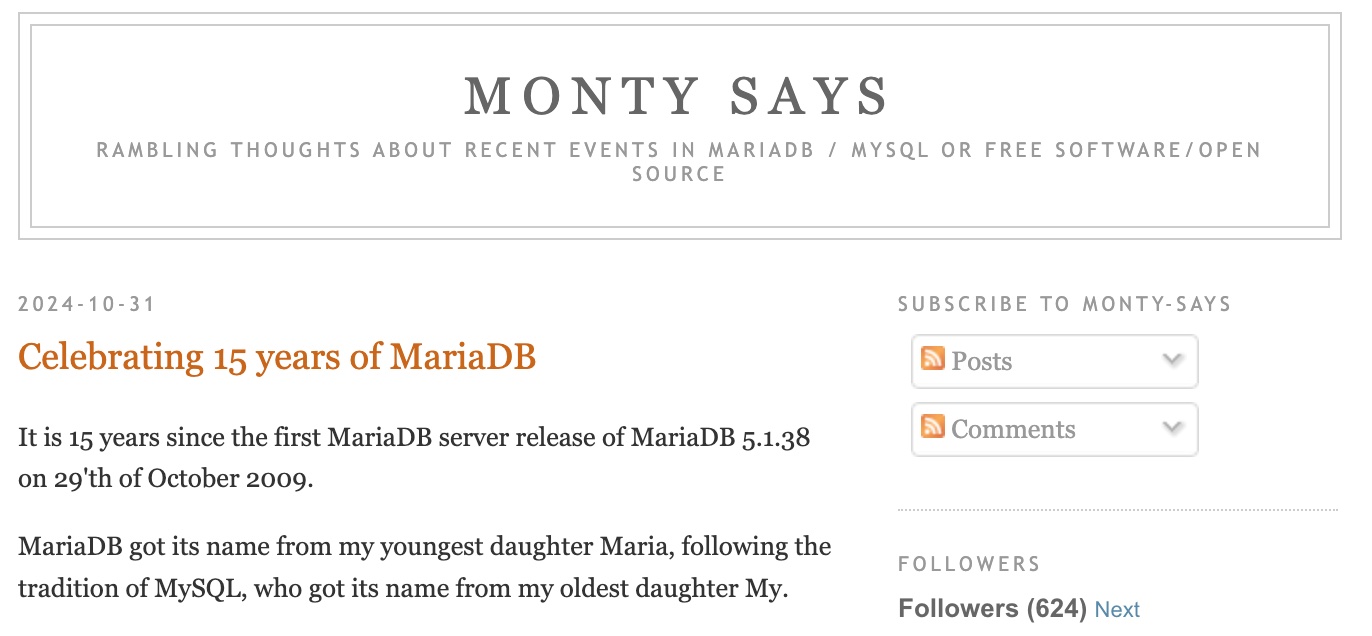Category Archives: Stories
At the MariaDB Foundation, we’re constantly engaging with users, partners, and collaborators to understand how MariaDB fits into their infrastructure—and what we can do better. A recent conversation between our Executive Chairman Kaj Arnö and Renato Furter from Switch.ch, Switzerland’s national research and education network, revealed valuable insights into open source adoption, digital sovereignty, and collaboration across European academia.
From MySQL to MariaDB: Why Switch Made the Move
Switch has been a MariaDB user for years. Their journey began with MySQL, like many institutions in academia. But when Oracle’s roadmap grew increasingly opaque and development around MySQL 5.7 stagnated, the Switch team made a practical decision: migrate to MariaDB.
…
In our mission to grow MariaDB adoption, we’re always eager to spotlight the journeys of real-world users – especially those who’ve made thoughtful, strategic choices. Thanks to long-time MariaDB consultant and community champion Oli Sennhauser, we got a chance to sit down with one of his clients: Swiss eCommerce provider Glarotech of the PepperShop platform, and their founder Roland Brühwiler.
When Swiss eCommerce platform provider Glarotech started over 20 years ago, it was a small university project with three people. Today, it has grown to 30 employees and thousands of eCommerce clients – but many of their early choices still echo through their technology stack.
…
Right after the recent MariaDB Meetup in London, I had the pleasure of sitting down with Steve Shaw – founder and CEO of HammerDB, former Principal Engineer at Intel, and board member of the MariaDB Foundation. Steve delivered the keynote talk at the event and has a unique perspective on performance, open source, and the intersection between commercial and community-driven database development.
This blog post captures our conversation – a dialogue between two people passionate about open source and database performance. We talk about Steve’s transition from Intel to HammerDB, his relationship with MariaDB Corporation, the nuances of performance testing, and what lies ahead for the HammerDB and MariaDB communities.
…
Continue reading “Open Source Performance, Benchmarks and MariaDB: A Conversation with Steve Shaw”
In a recent conversation, I had the pleasure of speaking with Michal Schorm, the maintainer of MariaDB packages for Red Hat and Fedora – and newly elected Observer on the MariaDB Foundation Board. Our discussion covered his role, the current state of MariaDB in these distributions, and ideas for future improvements.
The Role of a MariaDB Package Maintainer
Michal is responsible for ensuring that the MariaDB source code is compiled and made available as installable packages for Fedora, CentOS Stream, and Red Hat Enterprise Linux (RHEL).
…
Continue reading “A Conversation with Michal Schorm: MariaDB in Red Hat and Fedora”
Back from Brussels! With a bit of time to reflect, I’d like to share the aftertaste from our MariaDB Day, our very own FOSDEM Fringe Event. Prepare for an information-packed blog entry with links to the presentations, including live recordings and often the slide decks.
Billionaire controversy cancelled
Brussels during the first weekend of February is a hotbed of Open Source. The weather might not be hot, in contrast to the discussions in the corridors and rooms of the ULB university. The hottest topic expected – boycotting the presentation of Twitter founder Jack Dorsey – didn’t really happen.
…
New Year’s Eve is when everyone takes stock of the year that has passed. At MariaDB Foundation, we’re no different.
The technical highlight: MariaDB Vector
It’s not hard to pick the technical MariaDB highlight of the year: It’s MariaDB Vector.
No big surprise there: The biggest new thing in IT is AI. AI is getting mainstream. Mainstream applications need databases. Databases need stability, performance, ease of use. And low cost.
The solution: MariaDB Server. It’s relational. It’s standard. It’s Open Source.
The business highlight: MariaDB plc on a solid footing
It’s equally easy to pick the business MariaDB highlight of the year: K1 taking over MariaDB plc.
…
Continue reading “MariaDB highlights in 2024: Vectors, K1, and contributions”
Good news: IBM is upgrading their Gold sponsorship to Platinum!
Our trinity: Adoption, Openness, Continuity
The three pillars of MariaDB Foundation are Adoption, Openness, and Continuity.
Adoption means that we work towards MariaDB Server to be used everywhere, where you need databases. We think Open Source RDBMSes are the way to go, and we want you to choose MariaDB Server.
Openness means that we work towards making it easy for everyone to contribute towards making MariaDB Server the best Open Source RDBMS. Be it code, documentation, training materials, bug reports, feature requests.
…
We have been in festive mode this week, celebrating fifteen years of MariaDB. You may have seen our very own Ian Gilfillan’s blog MariaDB Server turns fifteen!, or the blog of Alejandro Duarte of MariaDB plc, MariaDB Server Turns 15! Here Are 15 Reasons Why Developers and DBAs Love It.
Technical overview by the creator of MariaDB Server
Now, MariaDB Server’s creator Michael »Monty« Widenius has chimed in, with a lot of technical detail. Hardly anybody is better equipped to create this technical overview, Celebrating 15 years of MariaDB.
…


